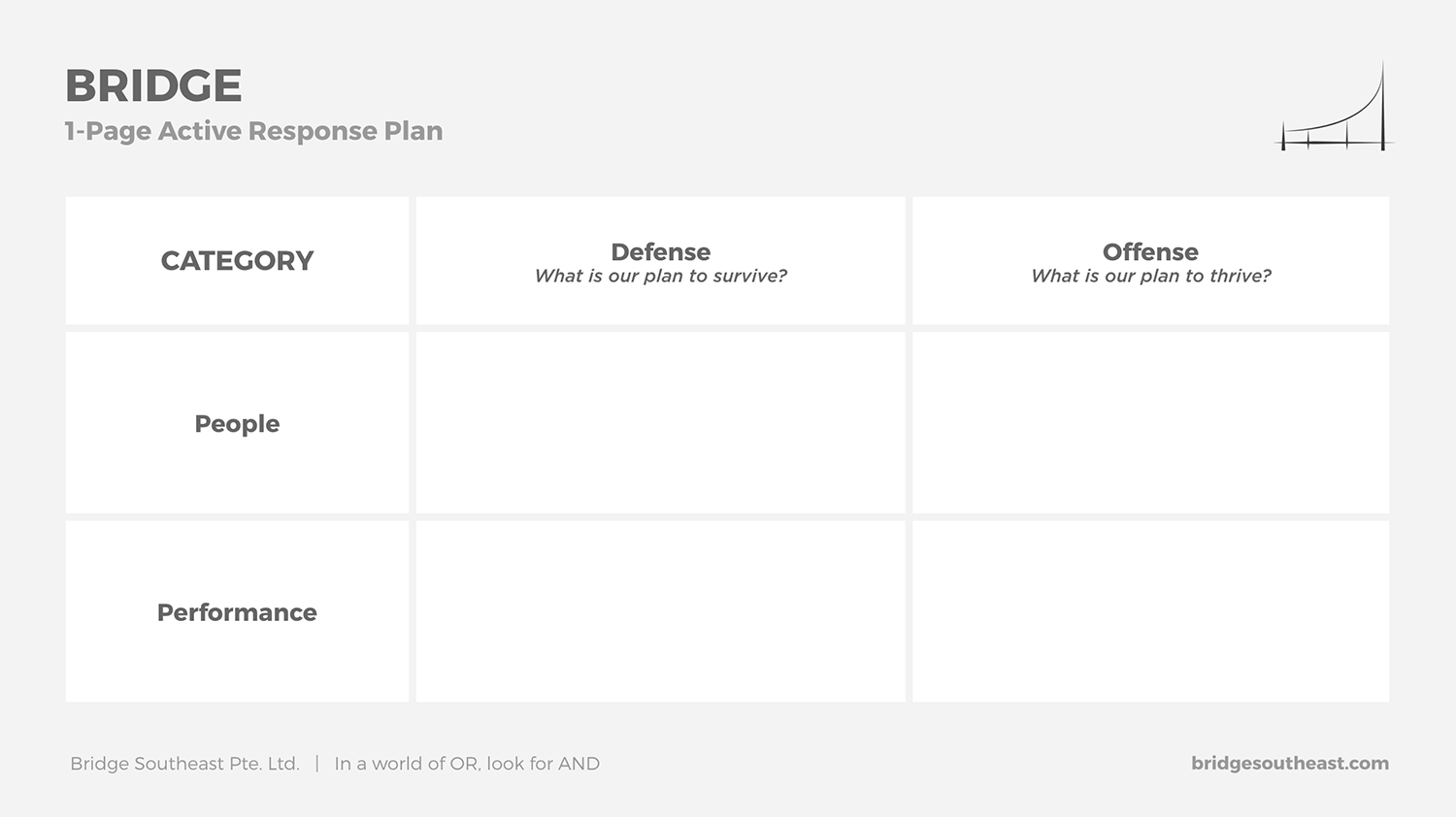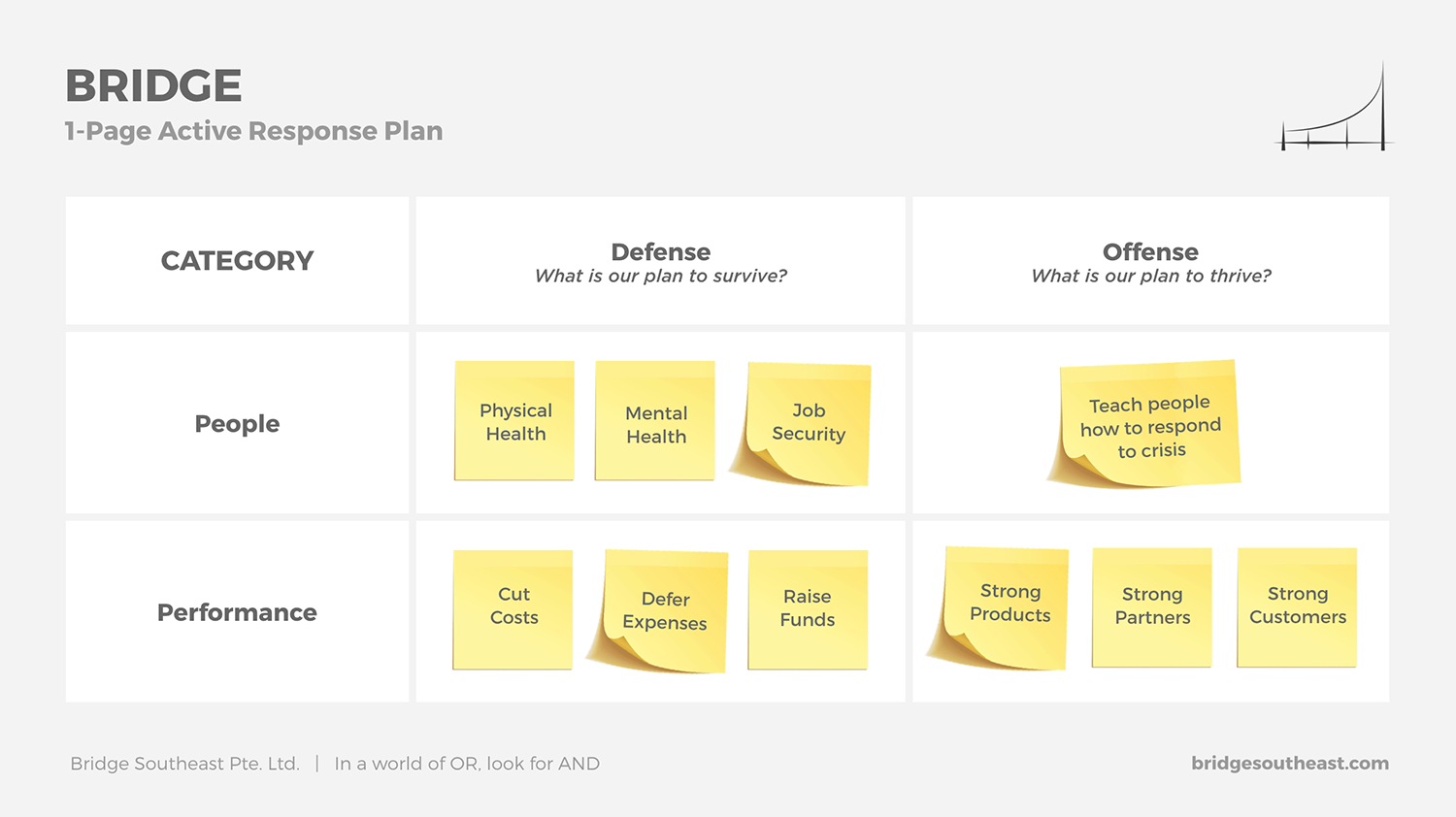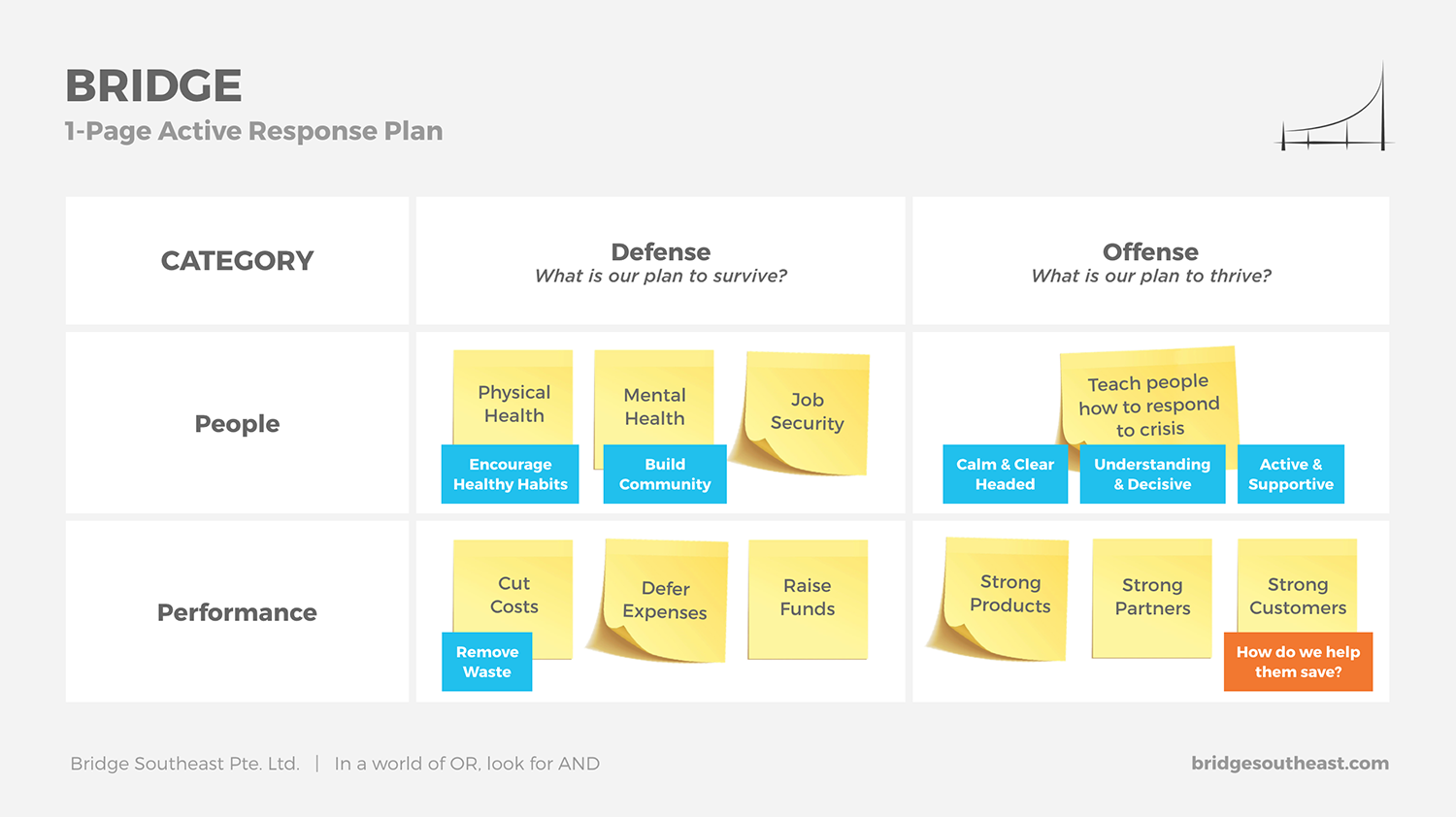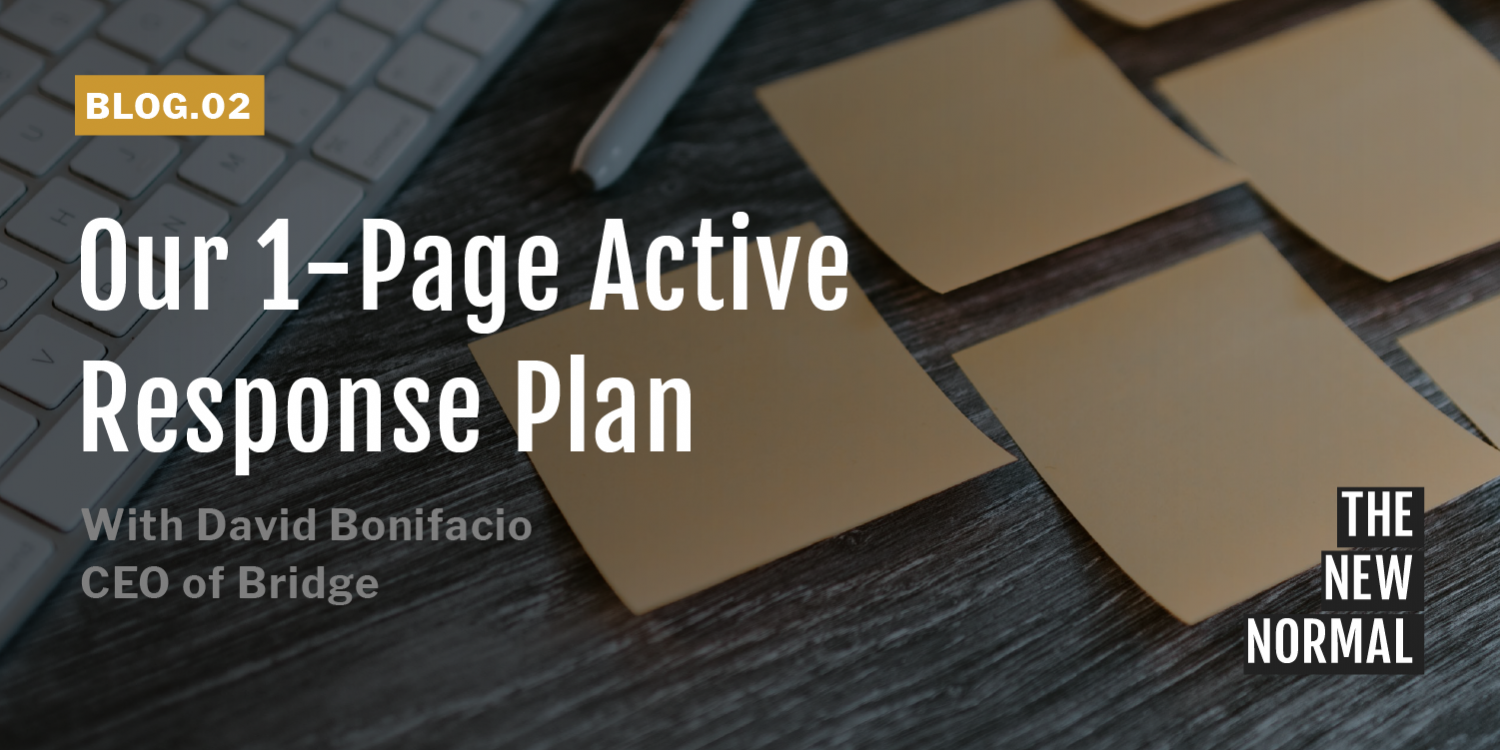I’d like to share our team’s very simple approach tackling the challenges the Coronavirus has brought about. We have purposefully kept it simple and focused because of the time, money, and energy constraints we and many businesses are facing during this period. I, personally, dislike unnecessary complexity. While I don’t think anyone would ever admit to liking “complexities”, somehow the plans, strategies, and approaches of well-meaning managers are full of them. In extra volatile times, it’s important that we don’t complicate our actions, but try to be as clear, competent, and committed as possible. It’s easier to understand, commit to, and execute a simple plan. While a complex plan might seem impressive, for limited companies like our’s would have a hard time bringing that plan to reality. So here’s our 1-Page template for planning a response.

As you can see, it’s more a framework than an actual plan. In the first column are our two priorities: Our People and Performance. The second column is the Defense column. Here we ask, What is our plan to survive? How do we protect our people and performance from the effects of the Coronavirus? The 3rd column is our Offense column, where we ask, What is our plan to thrive? We want to make sure that, even as we’re acting as prudent as possible given the threats we’re facing, we are still thinking about our core purpose for existing as a business. We don’t start companies simply to survive hard times but to Create and Capture Massive Value. Our Offense column makes sure that we have a plan to continue doing those two things despite the difficulties.
I’m extremely fortunate to have very strong leaders in Eric Wong (COO of Bridge), Junnie Lopez (CEO of Bridge People Solutions), and Janna De Guzman (CEO of Bridge Access), so I focus mostly on coaching them and guiding our strategic frameworks more than simply deciding for the team and ordering them around. As has been said, over and over, why “Why hire really smart people and not make them think by telling them what to do?” I know I give up a lot of control with my style of management, but my goal isn’t control, it’s success, and I find that empowering the people who are closest to the customers to influence and execute strategy works better in the long run than a single person expected to be omniscient, or worse, thinks he or she is omniscient. So when discussing this framework with our team, I asked them individually and as a group for their feedback, and that influenced our final “plan”.

Here’s what a basic plan looks like for us. I’ve already mentioned that we are a startup. So this means we have the resource limitations that are common to early stage companies and have to plan accordingly. This means that most of the activities we are doing must not eat up a lot of resources. If you look at your People row, you’ll find that our efforts are not around bailouts or insurance plans but more “education”. I believe that the number one benefit startups offer is a high rate of learning, including a high rate of personal learning. The leaders and I spoke about what we can offer, and we zoomed in on making sure our people are staying physically healthy, mentally healthy, and have as much job security as possible. For offense, for moving forward, we’re focused on helping teach our people how to grow into workers who are not paralyzed by the circumstances.
A lot of the Performance items are things you would expect in a standard crisis plan. I kept it quite general since the specifics are in the more details version of this framework for each subsidiary. Janna and Junnie take these themes and work on specific action plans that fit their context.
Here’s a little more detail. The yellow “post-its” are the priorities and the different colored ones are more actions items. It’s important that our plans are as actionable as possible. We then assign these action items to the right people (or to multiple people).

Summary
More than showing you what we’re doing, I want to share our approach. What you end up doing may be different from ours because your situation is different from ours. But I’d like to encourage you to keep one eye on the present and one eye on the future, connecting, or bridging, what is to what can be. There will always be challenges in business and in life, but they don’t have to stop us from progressing and growing. If you’re not sure how to proceed, follow these steps:
- Draw the 3×3 matrix on a piece of paper or white board
Category:
Defense Offense
People
Performance - Start with Defense: Think of what you need to DO in order to survive. This is a painful but necessary exercise.
- Move on to Offense: Think of what value creation you can start working on for your people and customers.
I hope this helps you as you formulate your own plans for addressing this once in a lifetime event.
Bonus: Thoughtfulness Beats Lavishness
One of the best things about being a startup and not having a lot of resources is that we have no option but to be very very creative about how we deal with our challenges. One thing I’ve learned throughout my career is that lack and necessity are two amazing ingredients for innovation. Because we can’t afford to be generous with what we don’t have, and we don’t have a lot of money, we focus on being as thoughtful as possible with the value we want to offer. I like what Eric Wong, COO of Bridge, shared with us in our huddle. He told us about how he spoke to his family about the financial impact the Coronavirus would have on them. His son is 4 years old and his daughter is 1. He remembered how his own parents explained to him and his siblings when they went through their own challenges in the past, teaching them and showing them how to address things head on as a family. This is something we want for all our own employees, that they may maximize this period of learning by treating it as an opportunity to mature, get stronger, and to face fear, not simply something ride out with hour after hour of Netflix.
While I wish we were in a position to absorb the shocks of life, the reality is that we aren’t, and that we are better off growing our people to be able to independently handle the shocks themselves. While we can’t give them the assurances large companies are making, we can provide them with something just as valuable, if not more so, which is an example of strong leadership during a time of crisis. I want them to come out of this remembering calm and clear-headedness, understanding and decisiveness, proactiveness and support from everyone in the company. While they may not appreciate these things right away, they will someday, because there will always be more challenges down the road.


